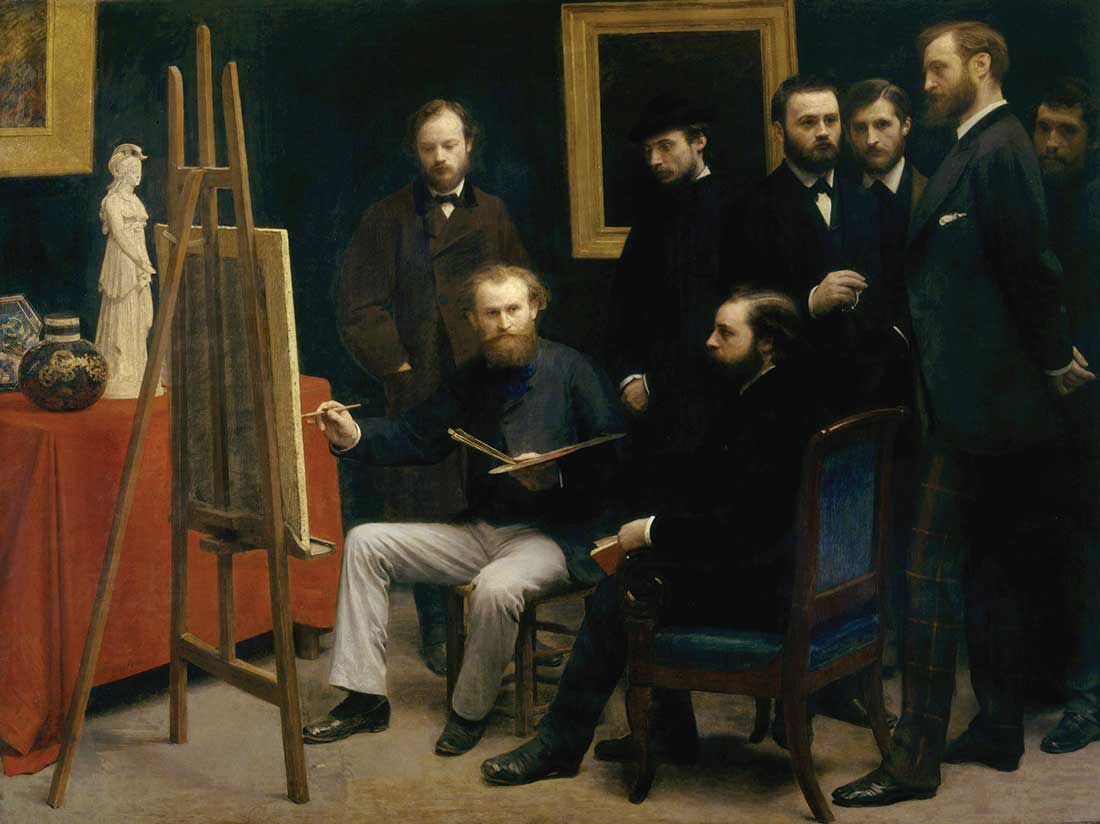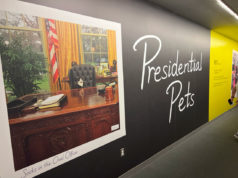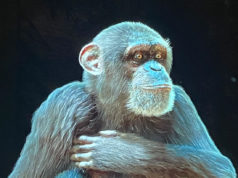We just can’t shake him. On billboards, on buses, in publications like this one –– it seems that wherever we look, there’s Vincent van Gogh staring back at us.
The legendary Dutch artist’s 1887 self-portrait, its vibrant ochres and blue-greens characterizing his later work, is just one of several dozen gems hanging now through Sunday at the Kimbell Art Museum as part of Faces of Impressionism: Portraits from the Musée d’Orsay.
“His is a face that people know,” said Kimbell deputy director George T.M. Shackelford. And there are lots of faces, nearly 70 in all, dating from the American Civil War era to the early 20th century. Shackelford, who co-curated the show with curators from the estimable Paris museum, said focusing exclusively on portraits was an easy choice.
“Portraiture is accessible,” he said. “The work gives you a sense of the people and a sense of their personalities.”
A majority of the pieces have never been seen in the United States before. And while impressionism is the broad stylistic category to which all 31 artists belong, technically, the genre is more than just one style. The dreamy pastels and feathery, almost hazy focus of Claude Monet and Berthe Morisot live comfortably with Paul Gaugin’s gloriously overstated primary colors and almost primally painted Tahitian women. Photograph-perfect portraits, like Alfred Steven’s “Every Happiness” and Henri Fantin-Latour’s “Portrait of Charlotte Dubourg, Sister of the Artist’s Wife,” are contrasted with the sketch-like, dotted brushstrokes of Camille Pissarro’s “Peasant Girl at a Fire (White Frost).” Pierre-Auguste Renoir’s luscious, soft-focus semi-nude “Gabrielle with a Rose” cohabits with his virtually monochrome, slightly jarring “Young Boy with a Cat,” in which a nude man (viewed from the back) nuzzles a feline. The latter is from early in Renoir’s career, while the former was painted in 1911, not long before his death.
While impressionism is still very popular, thanks largely to its representational qualities, the impressionist movement began as a revolt. In the mid-19th century, the Académie des Beaux-Arts, the authority of the Parisian art world, preferred highly structured realism, and any artist not conforming to certain standards would find him- or herself locked out of formal exhibitions. Paintings that may look quaint to us now evoked significant condemnation when they were new. The term “impressionism” reportedly comes from an outraged critic, Louis Leroy, who described Monet’s “Impression Sunrise” as “wallpaper in its embryonic state.” Finding themselves without exhibitions and therefore without paid commissions, many of the artists took to painting self-portraits or portraits of one another and started their own exhibitions, often to less-than-stellar reviews. One critic called the originators of the genre “a bunch of lunatics and a woman.”
That would be Berthe Morisot. The exhibit includes two of her paintings.
Fantin-Latour’s “A Studio at Les Batignolles,” the first piece visitors see upon entering the exhibit, is a prime example of both the quality of the artwork on display and the impressionists’ jabs at the art world. More than six feet wide, the painting is one of the largest in the collection. Viewed from a distance, the men gathered around the seated figure with a paintbrush at an easel could be any collection of late-twentysomething hipsters with long hair, well-developed beards, and somber clothes, perhaps enjoying an evening of dark beer and weighty conversation. As the viewer approaches, the subjects’ dress clearly identifies them as men of the 19th century. The sumptuous work is a portrait of one of Fantin-Latour’s contemporaries, Édouard Manet, surrounded by other artists, including Otto Scholderer, Frédéric Bazille, Monet, and journalist (and closet art theorist) Émile Zola. They don’t seem even the slightest bit offended by whatever’s on Manet’s canvas. At least one of them looks quietly impressed.
Some of the artists in the exhibit are familiar. Names like Monet, Renoir, and Cézanne will ring a bell even if you’ve never studied art. However, many of the painters are well known only in art circles. Although there are 10 Renoirs and five Cézannes, Shackelford purposefully brought in works by lesser-known impressionists, like Gustave Caillebotte’s haunting “Self Portrait,” along with lesser-known works by the more famous names.
“I hope people will find some familiar territory but still go away excited about something they didn’t know,” Shackelford said.
Faces of Impressionism is housed in the Kimbell’s Piano Pavilion, where the mix of concrete and glass makes for a stunning setting in which to view these masterpieces.
[box_info]
Faces of Impressionism: Portraits from the Musée d’Orsay
Thru Sun at the Kimbell Art Museum’s Piano Pavilion, 3333 Camp Bowie Blvd, FW. $14-18. 817-332-8451.
[/box_info]












